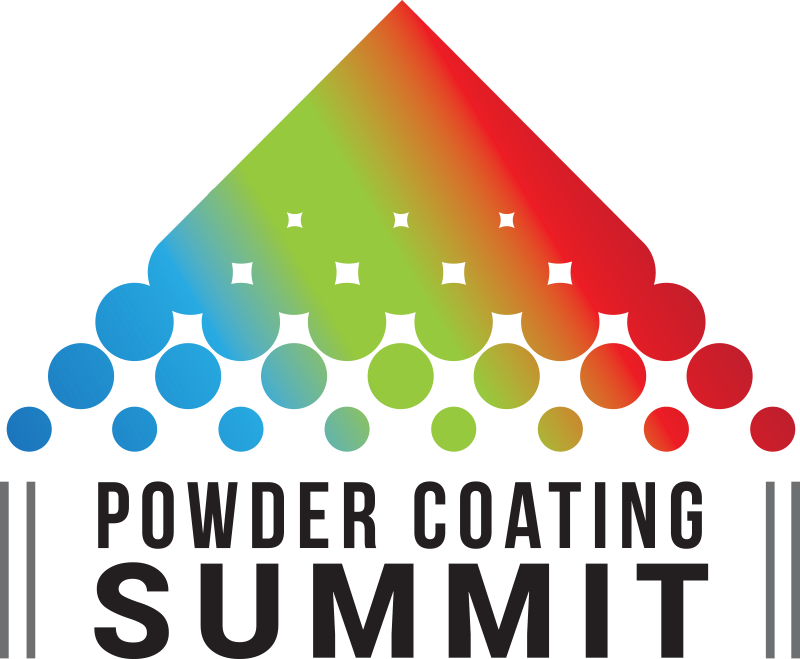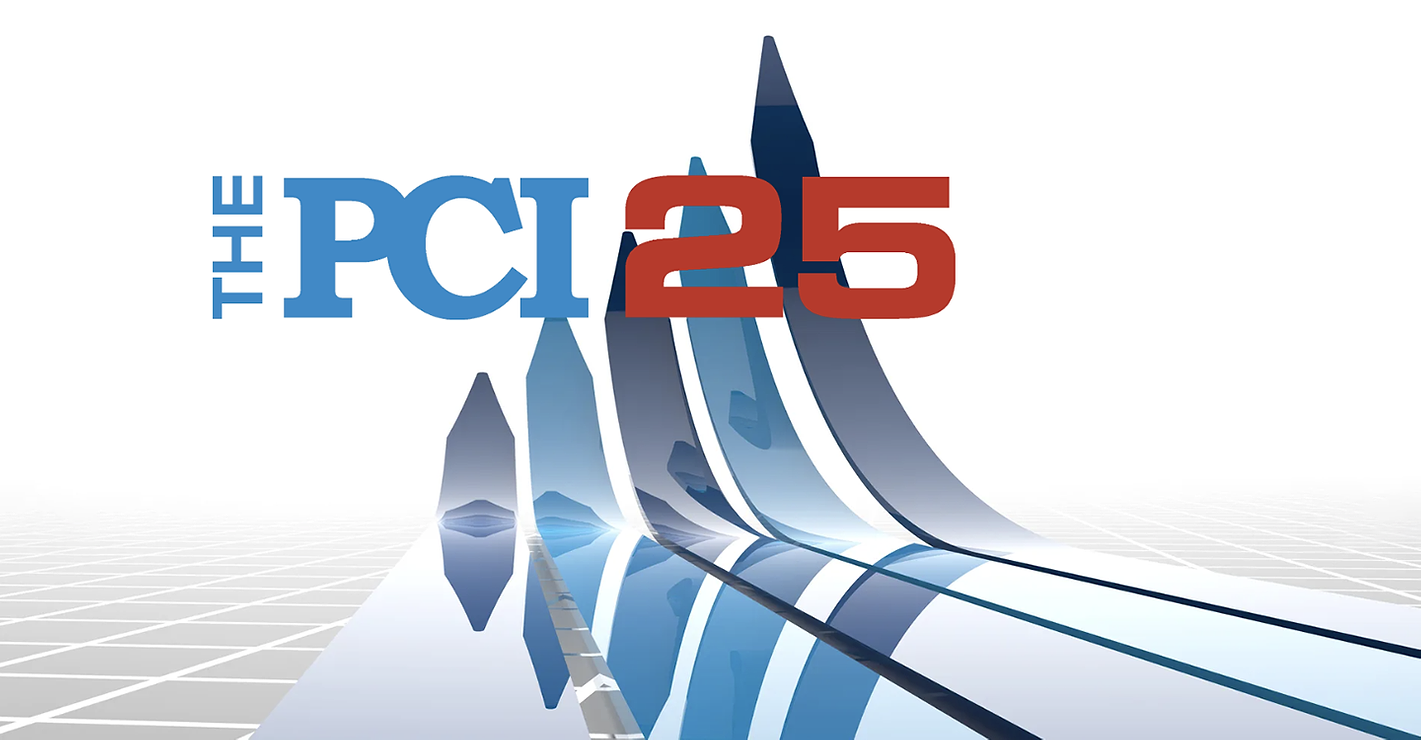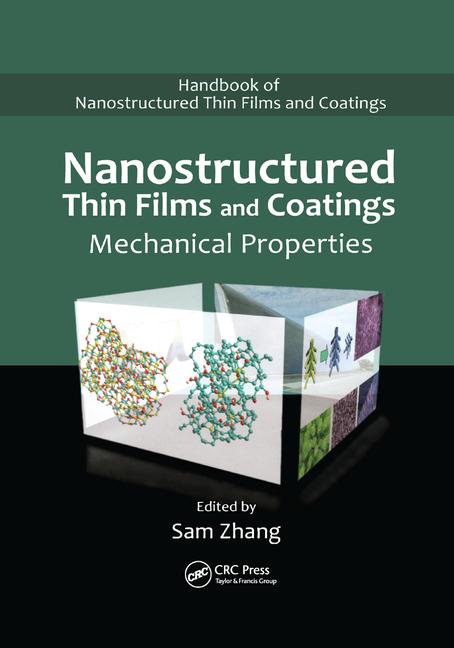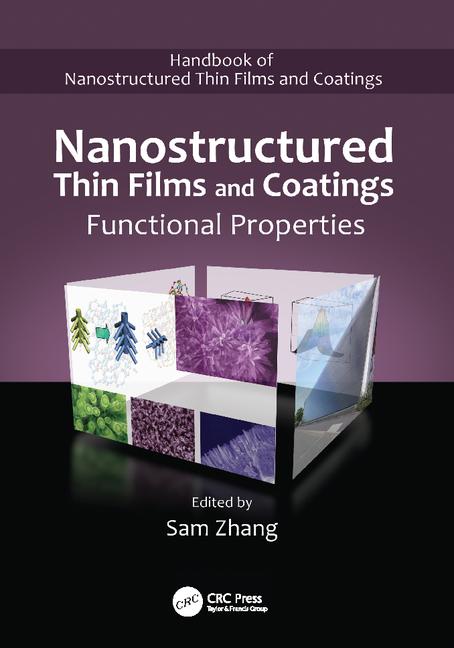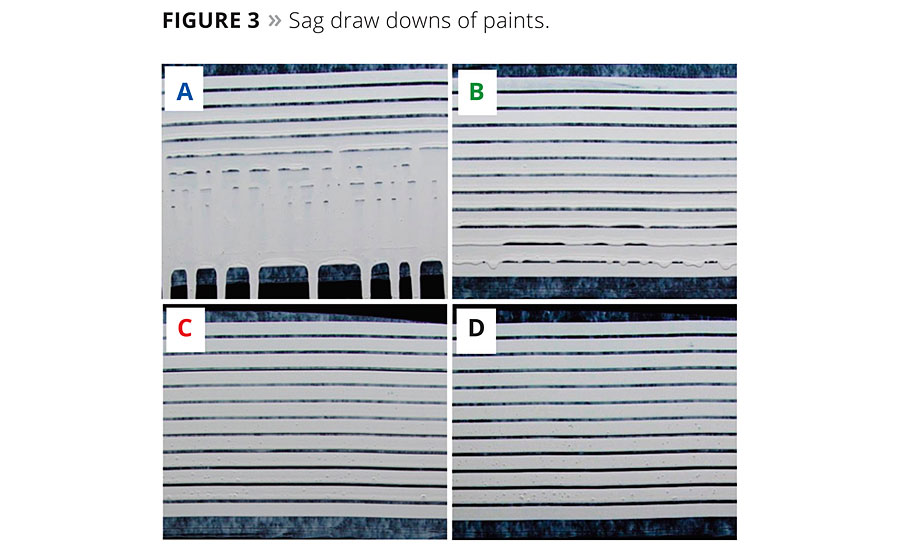Novel Enabling Techniques to Quantify Wet and Dry Coating Properties
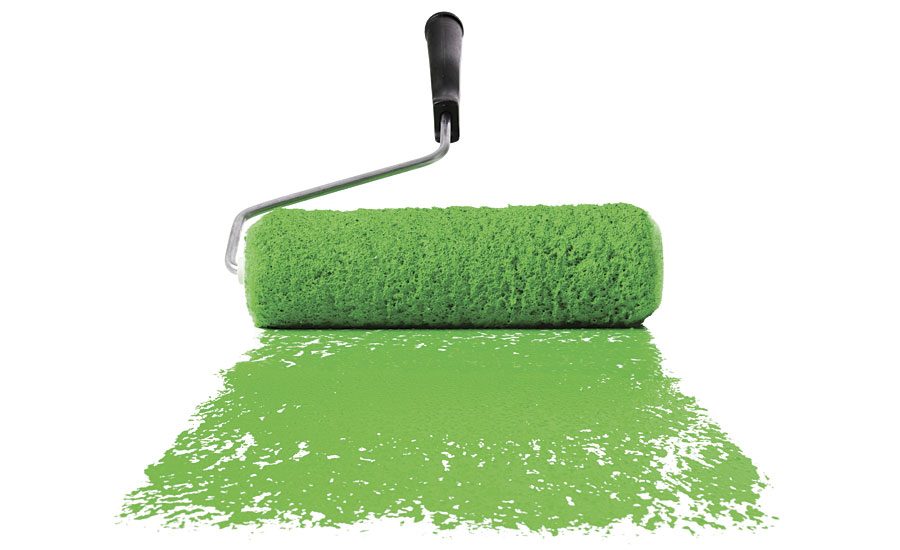































By Sowmitri Tarimala, Kimberly D. Gaughan and Sharon Y. Wilson – Ashland Inc., Wilmington, DE
The global coatings industry is constantly evolving to keep pace with emerging technology and consumer trends. Some trends are driven by environmental and regulatory requirements (e.g., low VOCs or low odor), cost (e.g., TiO2 optimization) or performance (e.g., improved hide, smooth finish). These trends pose challenges to formulators as well as specialty chemical companies to design products with improved performance while allowing them to remain compliant with regulations, address public environmental concerns, and still meet consumer quality and performance expectations. A key aspect in the development and selection of new additives to achieve improved performance is a robust measurement and analytical framework that helps establish structure-property relationships.
The objective of this article is to describe novel techniques that were developed to augment traditional measurement methods. The goal is to provide improved insight and facilitate the development and selection of rheological additives for improved final coating properties such as hide and finish. Specifically, surface profilometry techniques to quantify surface roughness, roller nap patterns and time evolution of leveling of wet films will be discussed and correlated with rheological data and application properties.
Experimental Methodology
Paint Formulation
The ingredients and amounts of raw materials used to prepare the coating are shown in Table 1. For this study, an all-acrylic semigloss, 24% pigment volume concentration (PVC) unthickened base paint was made and post-thickened using a single high-shear rheology modifier and one of four different low-shear rheology modifiers to equivalent Krebs units (KU) and ICI viscosity.
Test Methods
The test methods shown in Table 2 were used to evaluate various coating properties.
Surface Profilometry
A Nanovea® 3D surface profilometer (Figure 1) with an automated XY-stage and optical pen was used for surface characterization of roller-applied paint films on Leneta CU-1M gray scale charts. This is a non-contact method based on axial chromatism principle where incident light from the optical element passes through a lens of high-degree chromatic aberration and each wavelength of the light reflecting off various surface features will pass through a focal plane. The light intensities correspond to different heights, which form the image.1 The software uses this information to characterize the roughness and texture of various surfaces and quantify the surface height parameters according to ISO 25178 and are defined in Table 3.1 In this study, a representative area of 4 cm x 4 cm was scanned for each paint sample at a resolution of 25 µm per step or 1600 x 1600 resolution. This is a non-contact technique useful for surface characterization with a great degree of detail.
Dynamic Assessment of Leveling
The profilometer was used to assess the leveling evolution of wet paint films. Briefly, paint drawdown was applied on a glass plate using a standard Leneta leveling bar and was immediately transferred onto the profilometer stage. A scan along a single line was obtained continuously for approximately 25 min to obtain the evolution of the leveling with time. The time of scan per line was approximately 3 sec. Figure 2 illustrates the initial wet film profile from the leveling bar and the final paint film after time, “t”. It is evident that both the average film thickness and peak height diminish due to leveling and drying. In other words, the leveling and subsequent hiding of the paint are a function of the average film thickness and peak height. This information can be obtained by fitting a sine wave model to the raw data of each line profile, which provides insight into the kinetics of leveling and drying.
Rheological Characterization
All rheology data was gathered using a DHR3 rheometer from TA Instruments and a 40 mm parallel plate at a gap of 1 mm. The frequency sweep (0.0628-62.8 rad/sec) data was gathered after a pre-shear of 100 sec-1 and time sweep of 600 sec. All samples were measured at 25 °C. A small layer of oil was placed around the edge of the sample to prevent drying.
Extensional Rheometer
A HAAKE™ CaBER™ (Capillary Breakup Extensional Rheometer) was used to characterize the extensional rheology of the paints. Briefly, a small amount of paint was placed between two parallel plates at a fixed gap that moved apart at a user-defined speed. The time for the paint filament to break was then recorded.
Results and Discussion
Sag and Leveling
The commonly measured attributes of the four paints are shown in Table 4. Low-shear viscosity (or Stormer viscosity, measured in Krebs Unit or KU) typifies the “in-can” or package viscosity and other low-shear processes, such as sag, leveling, pigment settling and syneresis. The high-shear viscosity (or ICI viscosity) is usually associated with the coating application process, such as brushing, rolling and spraying. The data shows different sag and leveling characteristics of paints formulated to similar KU and ICI values. Paint A has excellent leveling but poor sag with drips, whereas Paints C and D have superior sag resistance but poor leveling. Paint B is shown to have better sag and leveling balance. The sag drawdowns on Leneta sealed substrates are shown in Figure 3.
Surface Roughness and Roller Nap Patterns
The paints were roller applied on Leneta CU-1M gray scale charts at an approximate spread rate of 9.8-11.0 m2/L. Figure 4 shows the surface profiles of a 4 cm x 4 cm section of the chart. Figure 4 illustrates both the surface roughness and the roller nap patterns, which are manifestations of the rheology of the respective paints. The color scale indicates the heights of the surface features and provides a clear distinction of the peaks and valleys. In Paint A, some “curtaining” is evident from the roller pattern, which arises due to poor sag resistance. Paint B has a much more uniform coverage at a lower film build. Paints C and D have slightly similar nap patterns, but the latter had a greater film build, as indicated by the predominance of peaks that are 40-55 µm in range.
Further insight can be extracted from the profilometry by different analyses of the raw data. Table 5 shows the average % contrast ratio of the applied films at respective spread rates. The data shows that Paint B has approximately 3% better hiding than other paints. The second illustration shows the root mean square (RMS) height (Sq) in µm, which is the standard deviation of height distribution, or the surface roughness. The lower value of Sq for Paint B means a less rough surface, which correlates with the nap pattern and improved hide. The surface parameter Skewness (Ssk) is a measure of symmetry of surface heights about the mean plane, where a value of Ssk > 0 indicates predominance of peaks, and values Ssk < 0 indicate more valleys. This is a quantitative and a better measure of roller nap patterns than qualitative descriptions such as ‘loose’ or ‘tight’, or ‘uniform’ or ‘non-uniform’. The data indicates that Paints B and D have a more symmetrical nap pattern but with more valleys in Paint B and more peaks in Paint D. It is unsurprising to note that a more uniform surface with symmetrical nap pattern would offer better application hide due to even distribution of paint film, thereby improving the hiding perception. The real advantage of this technique is that it provides a quantitative measure. This allows the coating formulator to assess without subjectivity if the different strategies to impact application hide are effective while monitoring the surface roughness, skewness and contrast ratio values.
The peak height distribution per unit area of the four different surfaces is illustrated in Figure 5. This analysis provides further validation to the symmetry of roller nap pattern and uniformity for sample B due to a more Gaussian distribution of the curve versus other samples. This data is also indicative of the degree of film build of the different samples.
The rheological characteristics of the four paints are shown in Figure 6. The tanlvalue (G”/G’) as a function of frequency shows very good indication and correlation with leveling/sag balance and roller pattern appearance. Samples with tanlvalues larger than 1 (G”>>G’) have more dominant flow characteristics and level very quickly, appearing more “saggy” in roller pattern, whereas samples with tanlvalues lower than 1 (G’>>G”) have less flow properties and appear “sticky” in roller pattern appearance. Samples with a tanlvalue closest to 1 will have a balance between both leveling and sag characteristics, will hide the best and will have the more desirable roller pattern appearance, as corroborated by data for Paint B.
Extensional rheology of paint, shown in Figure 7 as the time for a paint filament to break, is also a good measure of roller appearance. In general, longer times to break correlate with higher elasticity in a paint and will give poorer appearance in a rollout. Short time to break is desirable for a much more even roller pattern and appearance. The time to break of these samples again correlates with the profilometry data for surface roughness and nap patterns. In summary, a lower extensional viscosity along with a good balance of sag and leveling are critical to get a uniform roller appearance.
Dynamic Assessment of Leveling and Drying
Traditional measurements of measuring leveling of paints are static and provide information only of dry paint films. As described earlier, a novel quantitative technique has been developed to provide insight into the time evolution of drying and leveling of wet films. Figure 8 shows the 2D leveling profiles of the four paint samples where the height is represented by the color scale, x-axis are about three peaks in the leveling drawdown spanning 7.5 mm and the y-axis is the time in minutes. It is important to note that for Paint A, the y-axis corresponds to 5 min, whereas for Paints B, C and D, the data corresponds to ~ 26 min. Paint A levels rapidly and is validated by standard leveling measurement in Table 4 and the rheology curves in Figure 6. Paint B exhibits good leveling, whereas Paints C and D have poor leveling. Traditional leveling measurement cannot distinguish between Paints C and D, whereas this technique can provide additional differentiation.
As described earlier, the raw data from each line profile was exported to a spreadsheet and fit to a sine wave model to obtain the peak height and the average film thickness. Figure 9 shows the time evolution of normalized peak height for three paints. Model fit data could not be obtained for Paint A, as it leveled rapidly and the line profile data was unusable. The data shows that it is possible to distinguish phases of leveling and drying of paint film. It is possible to further distinguish and quantify the rate of leveling of paints by isolating the initial part of the curve (~ 4 min) and fit the data to a power law. The data indicates that the rate of leveling of Paints C and D are similar with the latter leveling marginally faster, whereas Paint B has a superior leveling and good sag resistance (as shown earlier). The rate of leveling can also be correlated back to rheology data, with the lowest tanlvalues leveling slowest.
Figure 10 depicts the evolution of average film thickness with time from model data. The data is normalized to an average film thickness of 200 µm, the theoretical value based on the geometry of the leveling bar. The curves indicate that the rate of drying of all three paints is identical as carried out under ambient temperature (22 °C) and relative humidity of 20%. It is possible to quantify the rate of drying from the slope of the initial part of the curve (~4.5 µm/min), which indicates a rate of reduction of average film thickness. These are examples of non-traditional techniques that complement traditional techniques and provide a new framework to gain improved insight to link the paint characteristics to application properties. The advantages of a quantitative framework are reduced subjectivity and better differentiation of samples to augment data from traditional methods. The ultimate goal is to facilitate the development and intelligent selection of rheological additives for desired final coating properties with vastly improved hide and uniform appearance.
Conclusions
In the present study, novel enabling technologies that were developed to quantify both wet and dry coating properties and augment traditional measurement methods are discussed. These techniques include: a) profilometry of dry coating films to quantify surface roughness and classify different roller patterns, and b) dynamic assessment of leveling of wet coating films using profilometry. Data generated using the new techniques provided additional insight was correlated to rheology of paints and traditional attributes such as sag, leveling and applied hide (contrast ratio). The goal is to reduce subjectivity and provide better differentiation that would facilitate the development and selection of rheological additives for improved final coating properties such as hide and finish. n
References
1 Leising, C. Surface Roughness of Concrete with 3D Profilometry, Nanovea Inc, Technical Note, 2010.
Acknowledgement
The authors would like to thank Richard Henderson for his contributions as a co-author of this article.
Looking for a reprint of this article?
From high-res PDFs to custom plaques, order your copy today!
